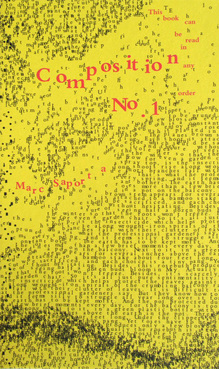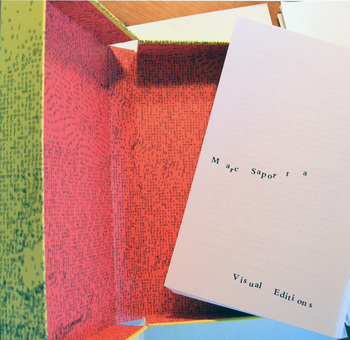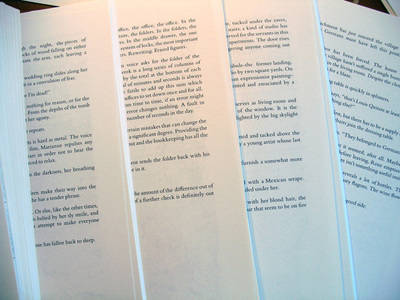Graphic Arts’ newest acquisition began in 1962, when the French writer Marc Saporta (1923-2009) published a book in a box, entitled Composition n° 1: roman. The following year, Princeton University acquired a copy translated by Richard Howard. The publisher included instructions for the reader: “The pages of this book may be read in any order. The reader is requested to shuffle them like a deck of cards.”
Around this time last year, the London publishing house Visual Editions decided to issue Saporta’s novel in a new edition. “We publish books that use visual writing,” the editors explained.
“There is a rich literary heritage for this kind of writing and this very much forms the basis for what we’re setting out to do. The way we think about visual writing is this: writing that uses visual elements as an integral part of the writing itself. Visual elements can come in all shapes and guises: they could be crossed out words, or photographs, or die-cuts, or blank pages, or better yet something we haven’t seen. The main thing is that the visuals aren’t gimmicky, decorative or extraneous, they are key to the story they are telling. And without them, that story would be something altogether different.”
The new edition includes 150 pages: 150 first pages and/or 150 last pages. On November 25, 2011, the Victoria & Albert Museum invited 150 people to be Read Outlouders, each one reading a different page spread throughout the Museum. Here’s a look at the event:
">
Marc Saporta (1923-2009), Composition No. 1, a Novel (New York: Simon and Schuster, 1963). Rare Books (Ex) 3290.49.326.7
Marc Saporta (1923-2009), Composition No. 1. Introduction by Tom Uglow, illustrated page entitled “The Anatomy of Your Favourite Novel” by Salvador Plascencia (London: Visual Editions, designed by Universal Everything, 2011). Graphic Arts Collection (GAX) 2012- in process


